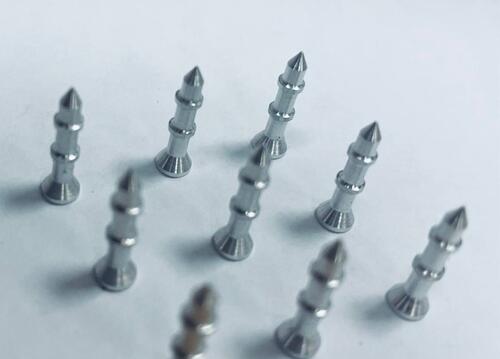The basis for modern Smartphone displays are artificial sapphires (monocrystalline corundum), which are acquired from high-purity aluminum oxide. These artificial sapphires are the main component of light emitted diode (LED) and the protective glass of modern gadgets. As Russia lacks large-capacity production of this raw material, companies have to buy it abroad at a high price. But NUST MISIS has begun to develop high-purity aluminum oxide, and the patented import-substituting technology will allow the university to provide domestic producers of monocrystalline corundums with the necessary raw materials.
High-purity aluminum oxide is an essential material for high-tech industries. It`s used as raw material for further processing into monocrystalline corundum, and then for refined use in high quality optics, solid state lasers, the production of bulletproof glass, illuminators, various semiconductors, LEDs and modern gadgets.
Due to its high degree of light transmission, excellent hardness (a 9 out of 10 on the Mohs scale of mineral hardness, second only to diamond), and durability, monocrystalline corundum is irreplaceable in optical and electronic industries.
Russian enterprises producing monocrystalline corundum cooperate with world-leading companies. “Monocrystal” is one of the main suppliers of artificial sapphires` two-inch wafers. The panel for AppleWatch is made of it. However, these companies have to buy expensive imported raw materials — the minimum price normally falls between $9.50 to $11 for just 1 kilogram. This basic economic reality often dooms domestic enterprises manufacturing monocrystalline corundum to run deficits or eventually to close up shop.
“Within the framework of the Federal Targeted Program for Research and Development, a group of NUST MISIS scientists led by Andrey Lysenko, Candidate of Technical Sciences and Associate Professor in NUST MISIS’s Nonferrous Metals and Gold Department, has developed a new technology to produce high-purity aluminum oxide. The technology is based on the electrochemical oxidation method. The SUAL-PM is the project`s industrial partner, and it is one of the largest industrial enterprises for aluminium powder included in the United Company RUSAL”, said Alevtina Chernikova, Rector of NUST MISIS.
“We thoroughly reviewed the most recent and promising methods of obtaining high-purity aluminum oxide, which are based on either the hydrolysis of aluminum alkoxides, hydrothermal oxidation, or anodic dissolution. From the industrial implementation point of view, the last method is the safest, but at the same time it is quite general in respect to requirements of raw materials. We have determined the most optimal conditions for all the manufacturing operations, and the electrolysis process of the electrolyte composition was chosen because of the required electric current density and its feed rate”, explained Andrey Lysenko, head of the project and Associate Professor at NUST MISIS’s Nonferrous Metals and Gold Department.
The experimental model of installation for obtaining high-purity aluminum oxide with a productivity of 1.0 — 1.2 kd/day was developed at NUST MISIS. The pilot and experimental batch of the product with a main element content of no less than 99.995% was achieved with this experimental model.
Additionally, the developed technology is highly safe (the technological process doesn’t carry immediate risk of the loss of life or environment, a risk that does exist in alternative methods), environmentally friendly, and has a low energy consumption. Mainly however, because of the simplicity of the development operations and the comparatively cheap price of the equipment, the technology is easy scaling and allows the provision of Russian artificial sapphire manufacturers with domestic raw materials on an industrial-scale of production.





